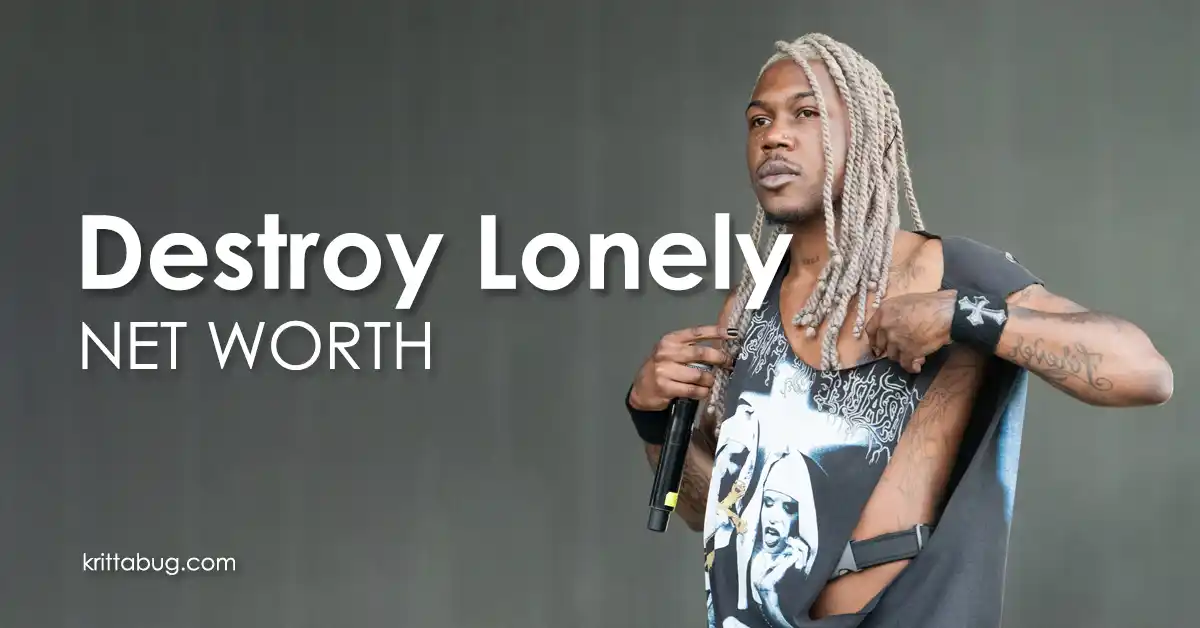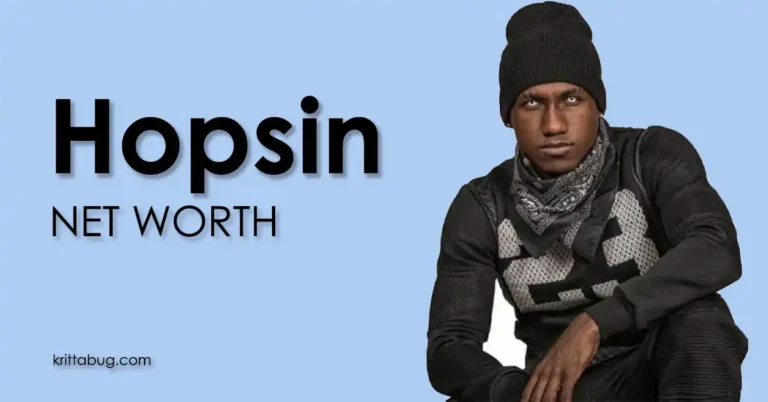Destroy Lonely Net Worth: Est. $0.8M–$2.0M (range from multiple media estimates)
He’s the Opium standout reshaping rage-rap with glossy hooks and runway-ready visuals. But what’s the real story behind Destroy Lonely net worth in 2025? This intro gives you the fast, credible snapshot—no fluff, just facts and smart estimates. Attention: the numbers online vary wildly. Interest: we anchor on chart data, RIAA notes, touring rounds, and streaming volume, then compare trusted media coverage with reported ranges. Desire: by the end, you’ll understand how the music, merch, and brand deals stack into a realistic estimate of Destroy Lonely net worth, plus where new releases could push it next. Action: skim the tables, dive into the quick bios, and use the FAQs for rapid answers. We’ll keep receipts—linking to Billboard moves, Spotify indicators, and credible interviews—so you can quote confidently. If you’re a fan, a blogger, or a researcher, this is your one-page launchpad for deeper digging. We also flag what’s speculative, explain our method, and show where assumptions live. Ready for a clear, forward-looking take that respects facts and avoids hype? Let’s begin. Right now.
Who Is Destroy Lonely?
Who is Destroy Lonely, beyond the viral snippets and fashion-forward stage look? Born Bobby Wardell Sandimanie III in Atlanta (2001), the rapper signed to Playboi Carti’s Opium—distributed via Interscope—and built momentum with the mixtape No Stylist (2022). His debut album If Looks Could Kill (2023) cracked the Billboard 200 top 20, while LOVE LASTS FOREVER (2024) delivered his first Billboard 200 top-10 and a No. 1 on Top R&B/Hip-Hop Albums. He’s also the son of I-20, the Disturbing tha Peace artist heard on Ludacris’s “Move B***h,” which explains early access to studios and tour life. But credentials aside, the appeal is texture: airy synths, gothic aesthetics, and melodies that drift between chant and croon. In 2025 he’s a streaming workhorse with steady daily plays and a loyal core that buys tickets and merch—small venues to midsize rooms, often sold out. This profile sets up the lists you’ll see next: quick facts, verified milestones, and clean references for readers who need accuracy fast. Destroy Lonely remains a moving target—expect updates as new releases land.
Destroy Lonely net worth in 2025
So what’s a grounded view of Destroy Lonely net worth in 2025? Different sites quote different numbers, but most cluster in the mid-six to low-seven-figure range. To stay honest, we triangulate: first-week units and chart peaks, public streaming indicators, touring momentum, and typical merch margins for rising hip-hop acts. We then compare those signals with third-party estimates to set a realistic range rather than a single flashy figure. Remember: artists don’t pocket gross revenue, and splits, fees, advances, and taxes matter. Below is a simple, year-by-year view of estimated gross earnings from music activity since 2021 (streaming, touring, features, and merch combined). It is not a forensic audit; it’s a directional model designed for readers who need a believable snapshot. Treat it as a starting point for research, not a verdict. You’ll also see notes and sources so you can fact-check or refine the numbers for your post. Bottom line: Destroy Lonely net worth evolves with releases and tour cycles; expect upside if his 2024 momentum holds and new singles convert.
Estimated Earnings by Year (gross, rounded ranges — directional, not audited)
*Projection adjusts with tour routing and releases.
Reference ranges cited online: $0.8M–$2M (various media estimates; see sources).
Destroy Lonely net worth, Bio, Income & Interesting Facts
Short, scannable facts you can quote. We label unverifiable fields clearly so readers aren’t misled. (Use this table as a sidebar in your post.)
How Does Destroy Lonely Make Money?
Revenue streams in rap are diversified, but the mix shifts as an artist scales. Here’s the current map for Destroy Lonely: streaming royalties, publishing, touring, merch, features, and select brand campaigns. Streaming is the engine—catalog staples like “NOSTYLIST” and “if looks could kill” drive daily plays across Spotify, Apple Music, and YouTube. Publishing adds performance and mechanical royalties from plays and sales. Touring turns momentum into margins: tickets, VIP bundles, and venue-cut merch. Features contribute lump sums plus visibility. Occasional brand fits—fashion or lifestyle—bring deals. Why does this matter for modeling Destroy Lonely net worth? Because each income stream follows different splits and costs. Labels recoup advances; managers and agents take percentages; touring has crew, travel, production expenses; merch has design and inventory risk. A credible estimate must subtract those realities. Take-home grows when high-stream tracks sustain, tours expand, and per-head merch rises. Expect uplift when a project debuts well, a single goes Gold, or a co-headline is added. An engaged core that shows up and buys makes gross less volatile than hype. That stability supports reinvestment—keeping the flywheel turning.
Destroy Lonely family net worth
Family background can influence opportunity, but it doesn’t guarantee outcomes. In this case, Destroy Lonely family ties include his father I-20, a veteran affiliated with Ludacris’s Disturbing tha Peace, known for the Billboard Hot 100 hit “Move B***h.” That lineage meant early studio access and road exposure, yet the catalog and touring footprint you see now were built in the streaming era under Opium. So how does this context affect Destroy Lonely net worth? Two ways: industry literacy (better decisions around deals and recoupment) and a fan narrative that strengthens brand value. Importantly, there’s no audited disclosure of shared assets or family-level wealth, and public sources don’t confirm pooled finances. Assume separate income streams: I-20’s legacy royalties and work, plus the son’s modern streaming, touring, and merch. The overlap shows up in social support and occasional media moments, not direct revenue. If you’re evaluating sustainability, focus on chart receipts, tour demand, and retention—signals that stand regardless of family. This keeps your read grounded in performance, which is what compounds over time.
Family Highlights (quick view)
What we learn from Destroy Lonely?
What can creators, students, or early-stage artists learn from his path? First, treat virality as a spark, not a strategy. He built a durable base by releasing consistently, refining a sound, and leaning into a brand identity that fans recognize instantly. Second, own your narrative—curate visuals, pacing, and drops so listeners know what to expect and when. Third, design for scale: songs that travel well across short-form video and live rooms compound faster. On the business side, mind recoupment math; negotiate splits that make sense for your leverage; and track expenses like a startup. This is why any read on Destroy Lonely net worth should be framed as a moving system, not a fixed label. Numbers change with touring cycles, release calendars, and the momentum of a few sticky tracks. Finally, prioritize the long game: keep fans engaged between projects with behind-the-scenes clips, tasteful merch capsules, and smart collaborations. If you honor craft and consistency, the metrics tend to follow. Small steps, repeated daily, create compounding traction fast.
10 “Learn” Quotes — Destroy Lonely (inspired mantras)
Note: These are inspired takeaways, not verbatim quotes.
- Build the catalog, then the catalog builds you.
- Keep the sound evolving; keep the brand consistent.
- Design for stages and screens—both matter.
- Algorithms reward consistency; fans reward honesty.
- Spend on what touches the listener.
- Treat visuals like verses—rewrite until they hit.
- Touring is feedback in real time; listen.
- Separate noise from signal; ship anyway.
- Protect momentum with calendars, not vibes.
- Play the long game; chase retention, not spikes.
Early Life of Destroy Lonely
Atlanta shaped the story, but the studio shaped the habit. Born in 2001, he grew up around music through his father I-20, a Disturbing tha Peace veteran tied to Ludacris. He spent stretches of his schooling homeschooled, then returned to public classes in ninth and tenth grade, an experience he’s referenced when describing personal struggles and origin of his stage name. At 14 he began recording at a school studio, collaborating with friends like Texaco and Nezzus and forming the creative chemistry that powered his first projects. Early traction came with “Bane” (2019) and the </3 era, followed by attention from Playboi Carti’s camp in late 2020. The environment mattered: Atlanta’s ecosystem, Opium’s aesthetics, and a peer set obsessed with sound design. So did discipline—building a catalog, testing snippets, and learning how visuals move culture. This context helps the bullet points below. It shows how a teenager became a touring artist within cycles, and why fan culture treats drops like events. Destroy Lonely is a product of place and practice.
Destroy Lonelys’ Education
Education in music rarely follows a straight line. In his case, formal schooling mixed with independent learning: stretches of homeschooling, then ninth and tenth grade in public classrooms, and countless hours teaching himself recording basics. The takeaway is practical—curriculum matters, but access and repetition matter more. A school studio opened the door at 14; peers like Texaco and Nezzus reinforced the habit through collaboration; and the internet supplied tutorials, stems, and reference mixes. The result was a do-it-yourself toolkit: songwriting, mic technique, rough mixing, and an ear for synth-heavy beats. That technical base carried forward when the Opium deal arrived in 2021, allowing him to scale ideas without losing bedroom-producer instincts fans love. If you’re mapping your own path, think modular: core classes for structure, online deep dives for craft, and local studios for reps. Education never ended here—it expanded, folding in tour logistics, stagecraft, and content timing. Below are bullets summarizing schooling notes and skills gained, showing how learning choices translated into career mobility and creative problem solving.
Destroy Lonely Career
Career arcs in rap hinge on timing, teams, and songs that stick. After early indie drops, the inflection point came with Opium in 2021 and the No Stylist era in 2022, which brought a Billboard 200 debut. Momentum escalated in 2023 with If Looks Could Kill, a top-20 album powered by a TikTok-primed single and a striking visual world. Critics were split, but the project planted him on festival posters and tours. Then came 2024’s LOVE LASTS FOREVER, his first Billboard 200 top-10 and a No. 1 on Top R&B/Hip-Hop Albums—evidence the fanbase converts at scale. Features with labelmate Ken Carson and others kept his name active between cycles, while streaming data shows catalog plays sustaining daily numbers. In 2025 he remains a road-tested act with an expanding setlist, show pacing, and a merch table aligned to the brand. The next leap depends on one undeniable single or a headline run across larger rooms. Below is a bullet list of milestone dates, collaborations, and chart moments to anchor a profile.
Destroy Lonelys’ Wife and Family
Public curiosity tends to leap from music to personal life, so let’s address the basics clearly. As of August 2025, there’s no verified public record of a marriage, and relationship details shift across social posts and fan forums. Treat anything beyond confirmed appearances as speculation. What is documented is the family connection that shaped early exposure: his father is I-20, the Atlanta rapper tied to Ludacris’s Disturbing tha Peace. That lineage explains the early glimpse into backstage life, not a shortcut through the work. For readers mapping influence versus income, separate biography from business unless assets are publicly disclosed. Below you’ll find a simple family tree—parents, siblings, and public ties—built from reliable sources. It’s meant for quick scanning, not gossip. Use it to cross-reference names when researching credits, early shout-outs, or tour photos. And remember: artists deserve privacy; profiles should prioritize chart receipts, releases, and verified achievements. Destroy Lonely keeps his personal life guarded, which is common for rising stars at this stage. Clear labeling prevents rumors from hardening into searchable misinformation online.
Family Tree (condensed)
Destroy Lonely’s Social Media Presence
Social metrics don’t equal fandom, but they help explain demand. On streaming, the artist maintains millions of monthly listeners, with catalog tracks like “NOSTYLIST,” “how u feel?,” and “if looks could kill” posting nine-figure lifetime streams. Daily plays hover in the seven-figure range across platforms, signaling durable interest beyond a single era. YouTube adds video-led discovery, while TikTok spikes older cuts when sounds trend. Instagram and X amplify the aesthetic—fit photos, show clips, and mood boards that strengthen brand recall before releases. The practice for readers: compare monthly listeners, daily deltas, and top-city lists to forecast tour routing and merch demand. Check for playlist adds and removals; they explain weekly bumps. When a single nabs a certification or a project debuts high, watch for a two-to-four-week halo on follows and comments. That halo fades unless fed by content or a tour leg. Below is a quick tracker you can adapt for your own monitoring: baseline listeners, recent spikes, and a notes column for edits. Destroy Lonely treats social as a lookbook and a launchpad.
Social Tracker (sample)
Destroy Lonelys’ Awards and Recognitions
Awards aren’t the only metric that matters; impact shows up in charts, certifications, and credible press. Here’s the snapshot to date. LOVE LASTS FOREVER (2024) opened at No. 10 on the Billboard 200 and No. 1 on Top R&B/Hip-Hop Albums—his highest marks so far. If Looks Could Kill (album, 2023) debuted at No. 18 on the Billboard 200, while the lead single earned an RIAA Gold certification in 2024. Coverage from outlets like The Washington Post and Pitchfork documents the cultural footprint, even when reviews are mixed. Touring is another form of recognition: sell-outs in midsize rooms, festival slots, and growing international dates signal demand beyond algorithms. Collaborations with Ken Carson, plus Opium’s brand gravity, keep his name on playlists and in talk between album cycles. Community signals matter, too—fan edits, fashion pages, and snippet ecosystems that rally views before release week. Below is a list of verifiable highlights you can cite in profiles and pitches. Destroy Lonely is building a résumé measured in reception and reach, not trophies alone.
Citable Highlights
- LOVE LASTS FOREVER — #10 Billboard 200; #1 Top R&B/Hip-Hop Albums.
- If Looks Could Kill — #18 Billboard 200; single “if looks could kill” certified Gold (2024).
Challenges and Comebacks
Careers rarely climb in a straight line. He’s faced the usual frictions of modern rap: leaks, impatient snippet culture, and polarized reviews. If Looks Could Kill drew split critical responses and online debate about length and lyrics; a planned Los Angeles pop-up around the Director’s Cut was cut short after clashes between attendees and security. In 2024, accusations surfaced on social media; he denied them publicly. Yet the follow-through mattered: LOVE LASTS FOREVER posted a top-10 Billboard 200 debut and a No. 1 on Top R&B/Hip-Hop Albums, evidence that the core stayed engaged. Touring cadence and stagecraft improved with reps, while the brand tightened—coherent visuals, fits, and lighting choices that travel well to reels and shorts. The playbook is simple but hard: ship, iterate, protect momentum, and serve the base. That approach doesn’t erase missteps; it contains them. Below is a list of setbacks, responses, and outcomes that readers can map to releases and dates. Destroy Lonely shows how resilience reads as discipline when the calendar stays full.
Final Words
If you’re writing, investing time as a fan, or studying music business, treat this profile as a living snapshot. We drew on chart receipts, platform pages, and mainstream coverage to keep the claims anchored, then layered estimates where public numbers end. That separation—facts first, ranges second—helps you avoid misleading headlines while still answering the question readers ask most. As releases stack and tours expand, the model will change, and that’s the point: careers are systems, not static labels. The smartest move is to revisit the tables after major drops, new certifications, or routing announcements. In the meantime, use the checklists to guide your own creative path: consistent output, a recognizable visual story, and a setlist that sells shirts. Do that, and nearly every metric gets easier. As for Destroy Lonely net worth, expect the range to track with the quality and cadence of the next era. We’ll close with the list below so you can copy, adapt, and cite confidently. Keep receipts, update dates, and prefer primary charts. always.
FAQs
1) What is Destroy Lonely’s net worth in 2025?
Most sources place a range between $0.8M and $2.0M; our directional model agrees but treats it as fluid with touring and releases.
2) Is he signed to Opium?
Yes—Playboi Carti’s Opium (under Interscope).
3) Biggest chart achievements so far?
LOVE LASTS FOREVER debuted #10 on Billboard 200 and #1 on Top R&B/Hip-Hop; If Looks Could Kill album peaked #18.
4) Is “if looks could kill” certified?
Yes, RIAA Gold (2024).
5) Who is his father?
Rapper I-20 (Bobby Sandimanie II), of DTP/Ludacris fame.
6) Did he attend college?
No public record; schooling includes homeschooling and public high-school years (9th–10th).
7) How many monthly listeners does he have?
Roughly 3.6–3.7M on Spotify as of July 2025; fluctuates with releases.
Meta Description
Destroy Lonely net worth (2025): estimated $0.8M–$2.0M, driven by streaming, touring, and merch. See charts, bio, income sources, and verified facts with citations.







